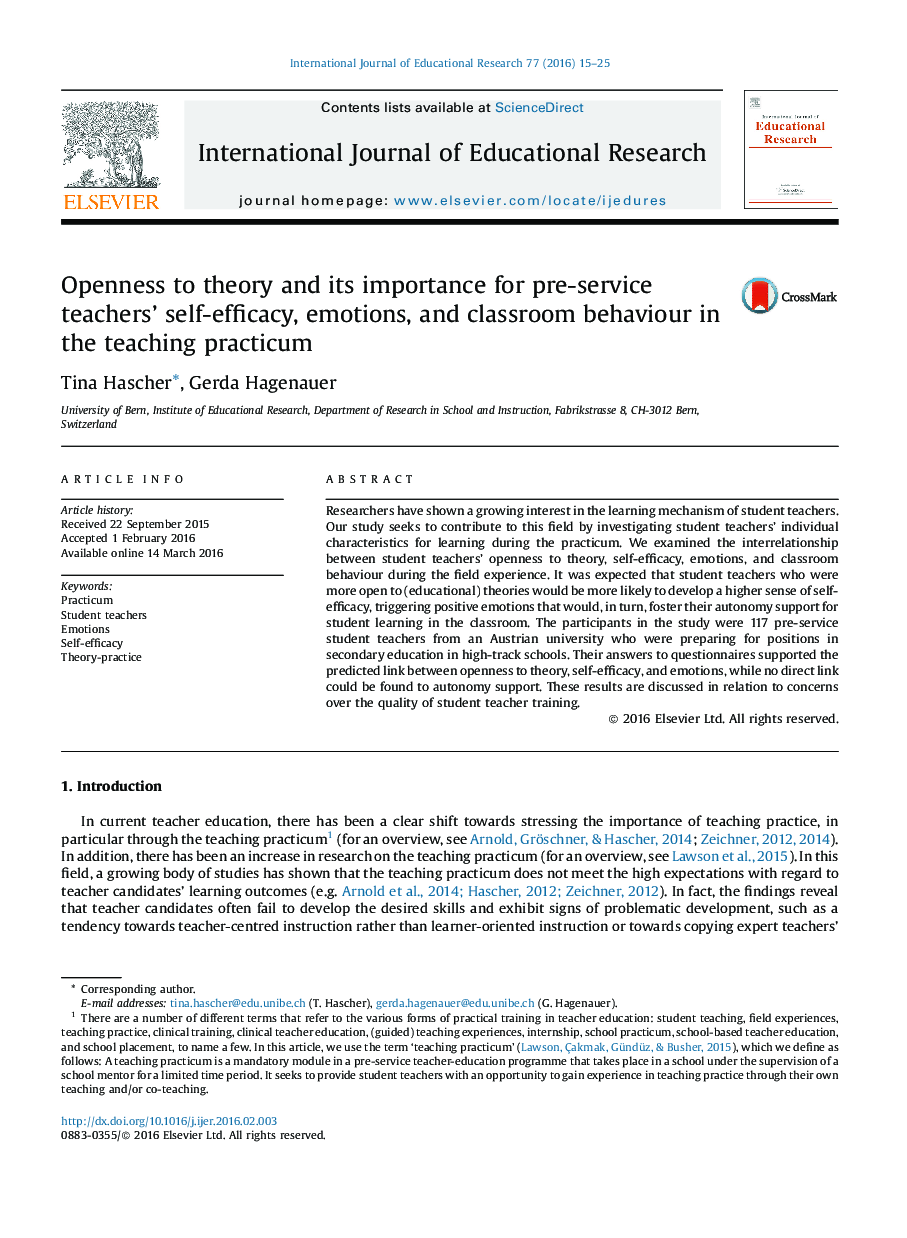| کد مقاله | کد نشریه | سال انتشار | مقاله انگلیسی | نسخه تمام متن |
|---|---|---|---|---|
| 356865 | 1435413 | 2016 | 11 صفحه PDF | دانلود رایگان |
• Students’ openness to (educational) theories scores relatively high.
• Strong relation between self-efficacy and emotions in the practicum.
• Openness to theory predicts students’ self-efficacy.
• Student teachers experience more positive than negative emotions in the practicum.
Researchers have shown a growing interest in the learning mechanism of student teachers. Our study seeks to contribute to this field by investigating student teachers’ individual characteristics for learning during the practicum. We examined the interrelationship between student teachers’ openness to theory, self-efficacy, emotions, and classroom behaviour during the field experience. It was expected that student teachers who were more open to (educational) theories would be more likely to develop a higher sense of self-efficacy, triggering positive emotions that would, in turn, foster their autonomy support for student learning in the classroom. The participants in the study were 117 pre-service student teachers from an Austrian university who were preparing for positions in secondary education in high-track schools. Their answers to questionnaires supported the predicted link between openness to theory, self-efficacy, and emotions, while no direct link could be found to autonomy support. These results are discussed in relation to concerns over the quality of student teacher training.
Journal: International Journal of Educational Research - Volume 77, 2016, Pages 15–25
